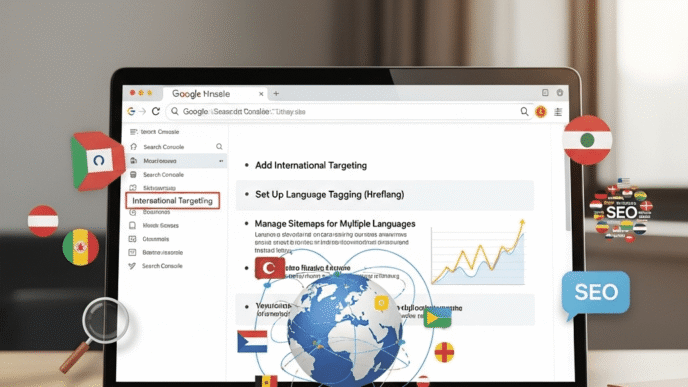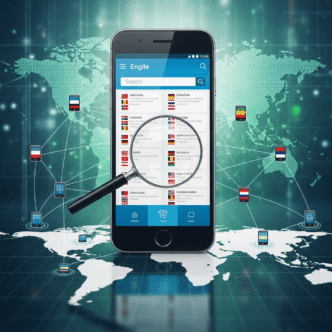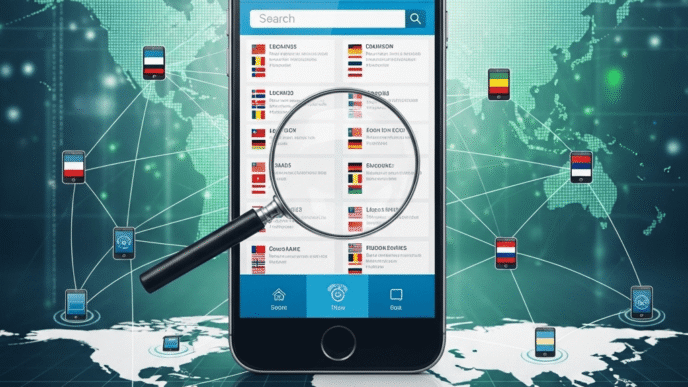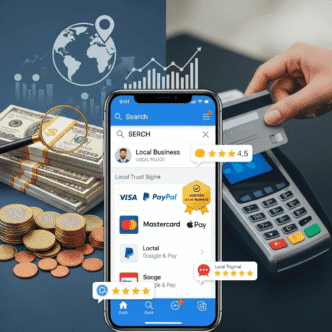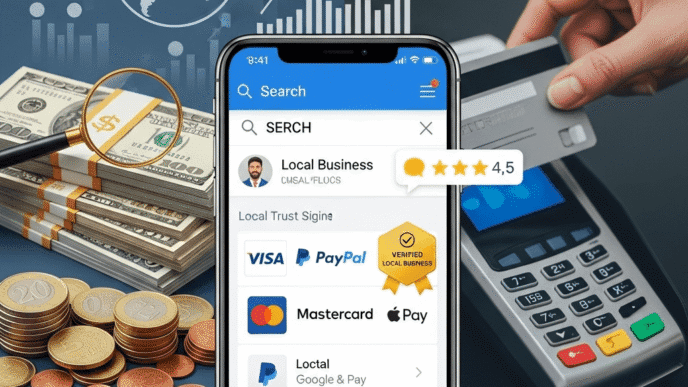You’ve finally cracked it—your website ranks beautifully in your home country. Traffic’s flowing, conversions are happening, and life is good. Then you decide to expand internationally, and suddenly… crickets.
Your perfectly optimized content sits invisible in Google.de, Google.co.uk, and Google.com.au. Your rankings? Nowhere to be found.
Here’s the brutal truth: international link building is a completely different beast than domestic SEO. What works in the US won’t necessarily move the needle in Japan. That killer outreach template? Falls flat in Germany.
But here’s the good news: once you understand how to build global backlinks the right way, you’ll unlock markets your competitors haven’t even considered. And I’m not talking about spammy directory submissions or buying links from sketchy brokers.
This guide reveals the link building strategies for multiple countries that actually work—tested across dozens of international campaigns, from e-commerce brands expanding into Europe to SaaS companies breaking into Asian markets.
Ready to go global? Let’s get into it.
Table of Contents
ToggleWhy Is International Link Building So Different From Domestic SEO?
Most people assume link building is link building, regardless of geography. Wrong.
International link building requires understanding cultural nuances, language barriers, search engine preferences, and local authority signals that don’t translate across borders.
The Critical Differences
1. Search Engine Dominance Varies by Country
Google might rule in the US (92% market share), but:
- Yandex dominates Russia (65%)
- Baidu owns China (76%)
- Naver leads South Korea (58%)
- Yahoo Japan competes strongly in Japan (15%)
Your link building strategy needs to align with the actual search engine people use.
2. Domain Authority is Regional
A .com link from a major US publication carries weight in America but might mean nothing in Germany. Meanwhile, a link from a German .de domain with modest international metrics could be pure gold for ranking in Germany.
3. Language Creates Natural Barriers
You can’t just translate your outreach email and expect results. Cultural communication styles differ dramatically—what’s considered friendly in the US might seem overly casual or even offensive elsewhere.
4. Link Profiles Look Different Globally
What constitutes a “natural” link profile in one country might look suspicious in another. European sites tend to have more forum links. Asian markets show different social signal patterns.
Pro Tip: According to research by Ahrefs, international pages with at least 5 backlinks from local domains in the target country rank 73% higher than pages with only generic international links.
How to Build Backlinks for International Websites: The Foundation
Before diving into tactics, let’s establish the framework that makes international outreach actually work.
Step 1: Choose Your International SEO Structure
Your site architecture determines how you’ll approach link building. There are three main options:
| Structure Type | Example | Link Building Focus | Best For |
|---|---|---|---|
| ccTLD | example.de, example.fr | Build links to each country domain separately | Companies with budget and resources |
| Subdomain | de.example.com, fr.example.com | Mix of main domain + subdomain links | Medium-sized operations |
| Subdirectory | example.com/de/, example.com/fr/ | Links primarily to main domain, with some country-specific | Smaller teams, easier management |
Each structure impacts your regional authority building differently.
ccTLDs (country code top-level domains) are strongest for local rankings but require building separate link profiles for each country—basically starting from scratch every time.
Subdirectories let you leverage your main domain’s authority but may require more effort to establish local relevance signals.
For detailed guidance on choosing your structure, check out our complete international SEO guide.
Step 2: Research Local Link Opportunities
You can’t use the same link sources across all markets. A strategy that works brilliantly in the UK might be completely irrelevant in Brazil.
Market-Specific Research Process:
- Identify top-ranking competitors in each target country
- Analyze their backlink profiles using Ahrefs, Semrush, or Majestic
- Note the domain types (news sites, blogs, directories, forums)
- Observe the ratio of local vs international domains
- Document common link building patterns unique to that market
Step 3: Build Local Presence Signals
Search engines need to trust that you’re legitimate in each target market. Market-specific links from these sources establish credibility:
- Local business directories (not international ones)
- Regional industry associations
- Country-specific press releases
- Local chamber of commerce
- Regional blog communities
- In-country event listings
These might not seem glamorous, but they create the foundation that allows higher-authority link building to actually impact rankings.
What Are the Best International Link Building Strategies?
Let’s get tactical. Here are the proven strategies that work across multiple international markets.
Strategy 1: Local Content Partnerships and Guest Posting
The bread and butter of global backlinks—but with crucial international twists.
How It Works
Instead of pitching random blogs in your target country, build genuine relationships with content creators who serve your target audience.
The Process:
1. Identify Local Content Hubs
Use tools like:
- Ahrefs Content Explorer filtered by country
- BuzzSumo with location parameters
- Manual Google searches using country-specific TLDs
Search for popular blogs, online magazines, and content platforms in your niche.
2. Craft Culturally-Appropriate Outreach
This is where most campaigns fail. Your outreach needs to respect local communication styles.
Example: US vs Germany Outreach
❌ US-Style Email (Fails in Germany):
Hey [Name]! 👋
Love your blog! Quick question—would you be interested in a killer guest post about [topic]? I think your audience would absolutely love it!
Let me know!
Cheers,
[Your Name]
✅ German-Style Email (Works):
Guten Tag [Name],
I am [Your Name] from [Company], and I have been following your website [Site Name] with great interest.
I noticed you published an article about [topic] and found it very informative. I would like to propose a contribution to your site regarding [specific topic] that would complement your existing content.
I have extensive experience in this field and can provide unique insights your readers may find valuable.
Would you be open to discussing this possibility?
Mit freundlichen Grüßen,
[Your Name]
The German version is more formal, specific, and demonstrates genuine familiarity with their content—exactly what works in German business culture.
3. Create Country-Specific Content
Don’t just translate your English content. Create genuinely valuable content that addresses local market needs.
Real Example: B2B SaaS Expanding to France
Instead of translating their US article “10 Project Management Tips,” they created:
- “Comment les PME Françaises Optimisent Leur Gestion de Projet” (How French SMBs Optimize Project Management)
- Featured French case studies
- Referenced French labor laws affecting project timelines
- Included quotes from French business leaders
Result: 12 high-quality French .fr backlinks within 3 months, compared to zero response from translated content.
Pro Tip: Work with native speakers for outreach and content creation. Translation tools miss cultural nuances that kill response rates. A $500 investment in a native copywriter can 10x your success rate.
Best Countries for Guest Posting
Based on acceptance rates and link quality:
High Success: UK, Canada, Australia, Netherlands, Scandinavia Medium Success: Germany, France, Spain, Brazil Lower Success: Japan, South Korea (relationship-focused, requires longer-term approach)
Strategy 2: Digital PR and Local Media Coverage
Local link acquisition through digital PR builds high-authority backlinks that actually move rankings.
The Approach
Create newsworthy angles specifically for each market, then pitch local journalists and publications.
Real-World Case Study: E-commerce Brand Entering UK Market
Challenge: US-based sustainable fashion brand needed UK authority signals
Strategy:
- Commissioned study on UK consumer attitudes toward sustainable fashion
- Released UK-specific data and insights
- Pitched exclusively to UK fashion and sustainability journalists
- Timed release around London Fashion Week
Results:
- Featured in The Guardian, Independent, and Evening Standard
- 27 UK backlinks from DR 60+ domains
- UK organic traffic increased 340% within 4 months
Keys to International Digital PR Success
Original research and surveys perform exceptionally well globally. Tools like:
- SurveyMonkey for local market research
- Google Consumer Surveys (available in multiple countries)
- Locally-relevant data partnerships
Localize Your News Angles
Don’t just translate press releases. Find angles that matter to each specific market.
Example: Software Company Expanding Globally
- US Angle: “New AI Tool Saves Businesses $10K Monthly”
- German Angle: “Deutsche Unternehmen Reduzieren CO2-Fußabdruck mit KI-Software” (German Companies Reduce Carbon Footprint with AI Software—environmentalism is huge in Germany)
- Singapore Angle: “Smart Nation Initiative Gets Boost from New Productivity Software” (tied to government program)
Build Media Lists by Country
Use tools like:
- Cision (global media database)
- Muck Rack (journalist search by location)
- Hunter.io (finding journalist emails on regional news sites)
- Local PR directories (varies by country)
Digital PR Outreach Template (Adaptable)
Subject: [Relevant Local Hook] - Data for Your Consideration
Dear [Journalist Name],
I'm reaching out because I noticed your recent coverage of [relevant local topic].
We've just completed research on [topic] specifically within [country/region], and the findings are quite surprising. [One compelling data point relevant to their beat].
I thought this might interest your readers given [specific reason tied to their previous work].
Would you be interested in seeing the full dataset? I'm happy to provide exclusive early access.
Best regards,
[Your Name]
[Title]
[Company]
For more insights on optimizing your international SEO strategy, explore our comprehensive guide on international SEO.
Strategy 3: Resource Page and Directory Link Building
Directories get a bad rap, but market-specific links from authoritative local directories absolutely still work.
The Key: Quality and Relevance Over Quantity
Forget international spam directories. Focus on:
Industry-Specific Directories
- Local trade associations
- Regional chamber of commerce
- Industry-specific portals (medical, legal, manufacturing)
- Professional licensing boards
Educational Resource Pages Universities and educational institutions maintain curated resource lists. These .edu and .ac domains carry serious weight.
Government and Municipal Resources Many government websites maintain business directories, especially in Europe.
Finding Quality Regional Directories
Search Operators by Country:
site:.de "add site" OR "submit site" [your industry]
site:.fr "annuaire" [your industry]
site:.es "directorio" [your industry]
site:.it "directory" [your industry]
For Educational Resources:
site:.edu "resources" [your topic]
site:.ac.uk "useful links" [your topic]
Real Example: Legal Services Expanding to Australia
Identified and secured listings on:
- Law Society of New South Wales
- Victorian Chamber of Commerce
- Australian Business Register
- Legal Practice Resource pages at 8 Australian universities
Impact: Established foundational authority signals that supported higher-level link building efforts, contributing to first-page rankings for “commercial lawyer Sydney” within 6 months.
Strategy 4: Local Sponsorships and Partnerships
Regional authority building through sponsorships creates natural, high-quality backlinks while building brand awareness.
Types of Sponsorships That Generate Links
Local Events and Conferences
Sponsor industry events in your target markets. Most event websites link to sponsors.
Search for:
- Industry conferences in [country]
- [Industry] expo [city]
- Professional meetups [region]
Local Sports Teams or Community Organizations
Especially effective for B2C brands. Local football clubs, community centers, and charities often link to sponsors.
Educational Sponsorships
University program sponsorships, scholarship programs, and research grants generate .edu/.ac backlinks.
Sponsorship Strategy for Maximum Link Value
Don’t just throw money at opportunities. Strategic sponsorships provide:
- Brand mention on event website (with backlink)
- Social media mentions (social signals matter internationally)
- Press coverage (event PR often mentions sponsors)
- Speaker opportunities (presenting = additional links)
- Networking (relationships = future link opportunities)
Budget Allocation:
- Micro-sponsorships: €500-2,000 (local meetups, small events)
- Mid-tier: €2,000-10,000 (regional conferences)
- Major: €10,000+ (national industry events)
Pro Tip: According to a study by Moz, contextual links from event pages have 2.3x higher correlation with rankings than generic directory links, making sponsorships one of the most efficient international link building investments.
Strategy 5: Leveraging International Social Media Platforms
Global backlinks aren’t limited to traditional websites. Regional social platforms generate traffic and authority signals.
Platform Selection by Region
| Region | Key Platforms | Link Opportunities |
|---|---|---|
| China | WeChat, Weibo, Baidu Tieba | Content sharing, profile links |
| Russia | VKontakte, Odnoklassniki | Group links, profile links |
| Japan | Line, Mixi | Community engagement, bio links |
| South Korea | KakaoTalk, Naver Blog | Blog posts, cafe links |
| Europe | Facebook, LinkedIn, XING (Germany) | Profile optimization, content sharing |
Social Platform Link Building Tactics
1. Profile Optimization
Every international social profile should link back to your localized content.
2. Active Community Participation
Join regional groups and forums on these platforms. Provide value before ever sharing links.
3. Content Distribution
Create shareable content in local languages specifically for these platforms.
Real Example: Fashion Brand Targeting South Korea
- Created Naver Blog in Korean (Naver is crucial for Korean SEO)
- Posted outfit inspiration boards twice weekly
- Engaged with Korean fashion blogger community
- Cross-linked to main e-commerce site
Result: Naver Blog became the #2 referral source for Korean traffic, and provided nofollow links that still improved brand searches and direct traffic.
For more strategies on optimizing your international presence, visit our international SEO guide.
How to Execute International Outreach That Gets Responses
The best link building strategies for multiple countries fall flat without effective outreach. Here’s what actually works.
The Cultural Communication Framework
Different cultures have vastly different communication expectations.
High-Context Cultures (Japan, Korea, China, Middle East):
- Indirect communication
- Relationship-building before business
- Formal language
- References and introductions matter significantly
Low-Context Cultures (US, Germany, Netherlands, Scandinavia):
- Direct communication
- Get to the point quickly
- Professional but can be casual
- Value is communicated explicitly
Country-Specific Outreach Best Practices
Germany: Be formal, specific, and professional. Use titles (Herr/Frau). No exclamation points or emojis. Demonstrate you’ve researched their work thoroughly.
France: Slightly more formal than US but warmer than Germany. Use proper French greetings. Show cultural awareness (don’t assume everyone speaks English).
Japan: Extremely formal. Introduce yourself and your company thoroughly. Never be pushy. Multiple touchpoints expected before any ask. Consider hiring a local liaison.
UK: Professional but friendly. Humor appreciated (but not overly casual). More formal than US but less than Germany.
Spain/Italy: Warmer, relationship-focused. Multiple emails normal. Don’t be overly transactional.
Australia: Casual but professional. Direct communication appreciated. Humor works well.
The International Outreach Template
This adaptable framework works across most Western markets:
Subject: [Specific Reference to Their Content] - [Value Proposition]
[Greeting in Local Language],
I recently read your article on [specific topic] published on [date], particularly the section about [specific detail—proves you actually read it].
[One sentence about why that resonated or your unique perspective on it]
I'm [Your Name] from [Company], and we [what you do] in [your country]. We're currently [expanding into their market/focusing on their topic].
I've developed [content piece/resource] specifically for [their audience] that [specific value proposition]. Given your focus on [their niche], I thought your readers might find it valuable.
[Optional: Specific reason why it's particularly relevant right now]
Would you be open to taking a look? I'm happy to adjust the content to better fit your editorial standards.
Thank you for your time and the excellent content you create.
[Appropriate closing in local language],
[Your Name]
[Title]
[Company]
[Professional Contact Info]
Outreach Timing by Region
Response rates vary dramatically by when you send emails:
Best Outreach Times:
- Europe: Tuesday-Thursday, 9-11 AM local time
- Asia: Monday-Wednesday, 10 AM – 2 PM local time
- Australia: Tuesday-Thursday, 9 AM – 12 PM AEST
- Latin America: Wednesday-Friday, 10 AM – 1 PM local time
Avoid:
- Monday mornings (inbox overload)
- Friday afternoons (weekend mode)
- National holidays (research these for each country!)
- August in Europe (vacation month)
Strategy 6: Broken Link Building for International Sites
Local link acquisition through broken link building works beautifully across borders with a few adaptations.
The Process
1. Find Resource Pages in Target Countries
site:.de inurl:resources [your industry]
site:.fr "liens utiles" [your industry]
site:.es "enlaces recomendados" [your industry]
2. Use Ahrefs or Check My Links to Find Broken Links
Look for 404 errors on these resource pages.
3. Create Replacement Content in Local Language
This is the key—your replacement content must be:
- In the local language
- Actually valuable to their audience
- Hosted on your localized domain/subdirectory
4. Outreach in Local Language
[Greeting],
I was researching [topic] and came across your excellent resource page at [URL].
While reviewing the links, I noticed that [specific link text] appears to be broken (404 error). The resource it pointed to was [description].
I recently published a comprehensive guide on this topic specifically for [country] audiences at [your URL]. It covers [key points] and might serve as a suitable replacement.
Would you consider updating the link? I'd be happy to suggest other alternatives if this doesn't fit your criteria.
Thank you for maintaining such a valuable resource.
[Closing],
[Your Name]
Success Rates by Market
Highest Response: UK, Australia, Canada, Netherlands (20-30% positive response) Good Response: Germany, France, Spain (15-25%) Lower Response: Japan, South Korea (10-15%, but very high quality when successful)
Strategy 7: Translating and Distributing High-Performing Content
How to build backlinks for international websites efficiently? Start with content that already attracts links in one language.
The Strategy
- Identify your highest-linked content in your primary market
- Don’t just translate—adapt for each target market
- Pitch to country-specific publications and bloggers
- Distribute through local content networks
Real Example: SaaS Company Study
Original Content: “The State of Remote Work in 2024” (US-focused, earned 89 backlinks)
International Adaptation:
- Germany: “Remote Work in Deutschland: Studie zu Homeoffice-Trends 2024”
- Added German labor law context
- Featured German companies
- Cited German research
- Result: 34 German backlinks
- UK: “Remote Working in Britain: Post-Pandemic Survey Results”
- Addressed UK-specific concerns (Brexit impact on remote hiring)
- Featured UK cities and companies
- Result: 41 UK backlinks
The key: Each version felt native to its market, not translated.
Content Adaptation Checklist
✅ Translate with native speakers, not Google Translate
✅ Update statistics and data for local relevance
✅ Change examples to local companies/scenarios
✅ Adjust cultural references and idioms
✅ Update date formats, measurements, currency
✅ Optimize for local search behavior
✅ Create market-specific headlines
✅ Update images for cultural appropriateness
Learn more about optimizing your international content strategy in our complete guide.
How to Build Links for Different International SEO Structures
Your site architecture determines your international link building approach.
ccTLD Link Building Strategy
Challenge: Each country domain needs its own link profile
Approach:
- Treat each ccTLD as a separate project
- Build location-specific links to each domain
- Invest in local hosting and presence signals
- Budget 2-3x more resources than other structures
Best For: Major brands with dedicated resources for each market
Subdirectory Link Building Strategy
Challenge: Balancing main domain authority with local relevance
Approach:
- Build links to both main domain and specific subdirectories
- 60% links to main domain, 40% to subdirectories
- Use anchor text that includes location (e.g., “German marketing guide”)
- Leverage main domain authority while building local signals
Best For: Most mid-size international expansions
Subdomain Link Building Strategy
Challenge: Subdomains don’t automatically inherit root domain authority
Approach:
- Focus links specifically on each subdomain
- Cross-link between subdomains strategically
- Build strong signals to root domain to benefit all subdomains
- 70% subdomain-specific, 30% root domain
Best For: Very distinct markets or when treating each region as separate brand
For detailed guidance on choosing your structure, check out our international SEO framework.
What Tools Help With International Link Building?
The right tools make global backlinks acquisition far more efficient.
Essential Tools by Function
| Tool | Best For | Key Feature | Pricing |
|---|---|---|---|
| Ahrefs | Backlink analysis, competitor research | Country-specific filters | $99-999/mo |
| Semrush | Multi-country keyword research | Local competitor analysis | $119-449/mo |
| Majestic | Link quality metrics | Topical Trust Flow | $49-399/mo |
| BuzzSumo | Content research by country | Location-based content search | $99-499/mo |
| Hunter.io | Finding local journalists | Email pattern detection | $49-399/mo |
| Pitchbox | Outreach automation | Multi-language templates | $195-998/mo |
| Respona | Digital PR outreach | Media database | $99-499/mo |
Regional-Specific Tools
For China:
- Baidu Webmaster Tools (essential for Chinese SEO)
- Weibo listening tools (social signals)
For Russia:
- Yandex Webmaster (crucial for Russian search)
- Serpstat (strong Russian SEO features)
For Japan/Korea:
- Naver Analytics (Korea)
- Line Official Account (Japan/Thailand)
Free Tools Worth Using
- Google Search Console (international property separation)
- Google Trends (compare search behavior by country)
- Check My Links (Chrome extension for broken link building)
- SEO Minion (check hreflang tags and international setup)
Common International Link Building Mistakes to Avoid
Learn from these expensive errors so you don’t repeat them.
Mistake 1: Using Direct Translation for Outreach
The Problem: Google Translate might handle words, but it destroys nuance and tone.
Example: US startup translated “Hey, what’s up!” to German as “Hey, was ist los!” which sounds bizarre in professional German communication.
The Fix: Always use native speakers for outreach. Period.
Mistake 2: Ignoring Local Link Building Customs
The Problem: What works in one country fails in another.
Example: Aggressive follow-up emails (normal in US) are considered rude in Japan.
The Fix: Research local business communication norms or hire local consultants.
Mistake 3: Building Links to Wrong Domain Version
The Problem: Acquiring great links but pointing them to the wrong country version of your site.
Example: German .de domain getting links while your German content is on example.com/de/
The Fix: Create detailed link building briefs specifying exact target URLs for each market.
Mistake 4: Forgetting About Local Hosting and Technical Signals
The Problem: Great links but poor technical foundation means limited impact.
The Fix: Ensure proper hreflang tags, local hosting where beneficial, and correct international SEO setup. Read more in our technical international SEO guide.
Mistake 5: Expecting Same Timeline Across All Markets
The Problem: Link building velocity varies dramatically by country.
Reality Check:
- Fast Markets (UK, Australia, Canada): See results in 2-4 months
- Medium Markets (Germany, France, Netherlands): 4-6 months
- Slower Markets (Japan, Korea, China): 6-12 months (relationship-focused)
The Fix: Set realistic timelines and expectations based on target market characteristics.
How Do You Measure International Link Building Success?
Regional authority building requires different metrics than domestic campaigns.
Key Performance Indicators
Link Metrics:
- Number of market-specific links (from target country domains)
- Domain Rating/Authority of linking sites
- Ratio of local TLD links vs international
- Link velocity (month-over-month growth)
- Anchor text distribution in local language
Ranking Metrics:
- Rankings in target country’s Google/Yandex/Baidu (use VPN or rank tracking tools with location)
- Visibility score in target market
- Featured snippet/position zero appearances
- Local pack rankings (if applicable)
Traffic Metrics:
- Organic traffic from target country
- Referral traffic from backlinks
- User engagement metrics (bounce rate, time on site) by country
- Conversion rate by geography
Country-Specific Tracking Setup
Use tools like:
- Google Search Console (separate property for each country/language)
- Ahrefs Rank Tracker (set specific location)
- AccuRanker (precise geo-location tracking)
- SEMrush Position Tracking (country-specific)
Benchmark Timeline
Realistic Expectations:
Months 1-3: Foundation building
- 10-30 local directory and resource links
- First guest post placements
- Technical setup optimized
Months 4-6: Momentum building
- 30-60 total quality backlinks
- Some ranking movement visible
- Local presence signals established
Months 7-12: Results phase
- 60-120+ quality backlinks
- Competitive rankings for target terms
- Measurable ROI from target market traffic
Pro Tip: According to a study by Backlinko, pages with at least 20 referring domains from the target country rank in the top 10 for competitive keywords 67% of the time, compared to just 12% for pages with generic international links.
What’s the Future of International Link Building?
International outreach is evolving rapidly. Here’s what’s coming:
AI-Powered Personalization
Tools like ChatGPT and Claude are making it easier to create culturally-appropriate outreach at scale—but only if you prompt them correctly with cultural context.
The Opportunity: AI translation and adaptation tools are improving, making it feasible to target more markets simultaneously.
The Risk: Everyone has access to these tools. Genuine relationship-building and cultural understanding become even more valuable differentiators.
E-E-A-T Goes Global
Google’s emphasis on Experience, Expertise, Authoritativeness, and Trustworthiness applies internationally, but manifests differently by market.
What This Means: Market-specific links from authoritative local sources matter more than ever. A link from a trusted German industry publication beats 10 generic international backlinks.
Zero-Click Searches Impact Link Strategy
Featured snippets and AI overviews are reducing click-through rates globally.
Adaptation: Focus on regional authority building that drives brand searches and direct traffic, not just rankings. Links that generate actual traffic become more valuable than pure SEO links.
Regional Search Engine Diversification
While Google dominates globally, regional players are strengthening:
- DuckDuckGo gaining privacy-focused users
- Ecosia growing in environmental-conscious markets
- Regional platforms maintaining strongholds
Strategy: Don’t over-index on Google. Build genuinely authoritative presence that ranks across platforms.
For comprehensive strategies on future-proofing your international SEO, explore our complete guide.
Final Thoughts: Building a Sustainable International Link Strategy
International link building isn’t a one-time campaign—it’s an ongoing investment in each market you serve.
The brands winning internationally share these traits:
✅ Patience: They understand different markets move at different speeds
✅ Cultural Respect: They invest in genuine localization, not just translation
✅ Relationship Focus: They build real connections, not transactional links
✅ Quality Over Quantity: They prioritize relevant local authority over volume
✅ Long-term Thinking: They treat each market as a separate, valuable ecosystem
Your action plan starts here:
Week 1-2: Audit your international SEO structure and local presence signals Week 3-4: Research competitors and link opportunities in your top-priority market Week 5-8: Launch initial outreach campaigns in one country (test and refine) Month 3+: Scale successful tactics to additional markets
Remember: how to build backlinks for international websites isn’t about doing more of what works domestically. It’s about understanding that each market is unique, with its own rules, customs, and link building ecosystems.
Start with one country. Get it right. Then expand.
The global market is waiting—but only for those willing to do the work properly.
Frequently Asked Questions
What is international link building and why does it matter?
International link building is the process of acquiring backlinks from websites in specific target countries to improve rankings in those local search markets. It matters because search engines like Google use location-specific signals to determine rankings, and links from local domains carry significantly more weight than generic international backlinks. Studies show pages with at least 5 backlinks from local domains in the target country rank 73% higher for local queries.
How do I build backlinks for international websites across multiple countries?
Start by choosing your international SEO structure (ccTLD, subdirectory, or subdomain), then develop country-specific link building strategies for each market. Focus on local guest posting, digital PR with regional media, country-specific directories, and local sponsorships. Work with native speakers for outreach, create genuinely localized content (not just translations), and build relationships with local influencers and journalists in each target market. Expect 4-6 months to see meaningful results in most Western markets.
What are the best link building strategies for multiple countries?
The most effective strategies include: (1) Local content partnerships and guest posting with native websites, (2) Digital PR targeting regional media outlets, (3) Quality local directories and resource pages, (4) Sponsorships of local events and organizations, (5) Broken link building on country-specific sites, (6) Adapting high-performing content for each market, and (7) Leveraging regional social platforms. Success requires cultural adaptation, native language content, and understanding local communication styles rather than simply translating existing campaigns.
How long does international link building take to show results?
Timelines vary significantly by market. UK, Australia, and Canada typically show results in 2-4 months. Germany, France, and Netherlands require 4-6 months. Japan, Korea, and China are slower, often needing 6-12 months due to relationship-focused business cultures. Factors affecting timeline include: existing domain authority, competition level, quality of localization, and consistency of link acquisition. Budget for at least 6 months before expecting significant ranking improvements in new markets.
Should I use ccTLDs or subdirectories for international link building?
Subdirectories (example.com/de/) are best for most businesses because they allow you to leverage your main domain’s authority while building local signals, require less resource investment, and are easier to manage. ccTLDs (example.de) are strongest for local rankings but require building separate link profiles for each country—essentially starting from scratch each time. Choose ccTLDs only if you have substantial resources and plan long-term commitment to each market. Subdirectories offer the best balance of effectiveness and efficiency for mid-size international expansion.
What tools are essential for international link building?
Core tools include Ahrefs ($99-999/mo) for backlink analysis with country filters, Semrush ($119-449/mo) for multi-country keyword research, and BuzzSumo ($99-499/mo) for content research by location. Hunter.io helps find local journalist contacts, while Pitchbox or Respona streamline outreach. Also essential: Google Search Console for international property tracking, and region-specific tools like Yandex Webmaster (Russia), Baidu Webmaster Tools (China), or Naver Analytics (Korea) depending on your target markets.
How do I avoid common international link building mistakes?
Never use direct translation for outreach—always work with native speakers who understand cultural nuances. Research local business communication norms (formal vs casual, direct vs indirect) before launching campaigns. Ensure links point to the correct country version of your site. Set realistic timelines based on market characteristics—don’t expect US-speed results in relationship-focused Asian markets. Verify proper technical setup including hreflang tags and local hosting before investing heavily in link acquisition.
What’s the ROI of international link building compared to domestic?
International link building typically costs 20-40% more than domestic campaigns due to native speaker requirements, cultural adaptation, and slower relationship building. However, ROI can be substantially higher because: (1) Competition is often lower in non-English markets, (2) You capture entirely new customer bases, (3) First-mover advantage in less-saturated markets, and (4) Links often have longer-lasting value. Most companies see positive ROI within 8-12 months, with some markets (UK, Australia, Canada) delivering returns as quickly as 4-6 months.




